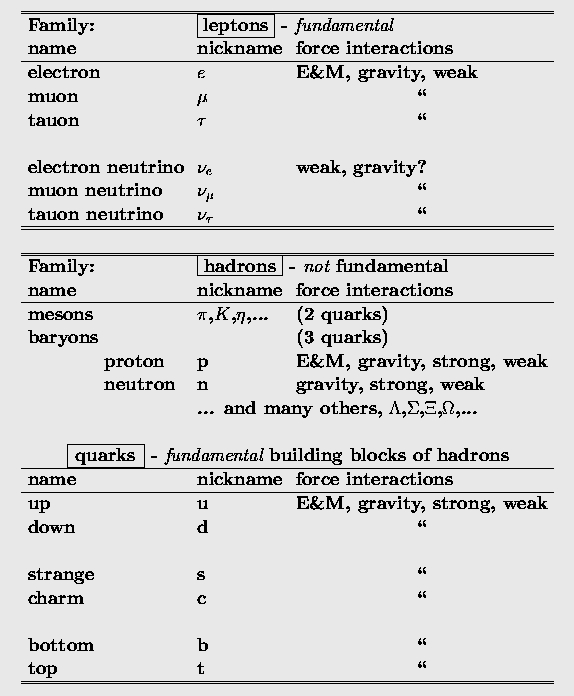(a) Stars in the early Universe were not massive enough to fuse
heavier elements in late stages of nuclear burning.
(b) He is the first stable
nucleus beyond H, and the deuterium bottleneck prevented earlier
formation of heavier elements.
is the first stable
nucleus beyond H, and the deuterium bottleneck prevented earlier
formation of heavier elements.
(c) The rate of particle + anti-particle annihilation is the
same as the rate of particle + anti-particle creation.
(d) primordial nucleosynthesis took place during the
matter-dominated era.
(e) The ``surface of last scattering'' prevented heavier nuclei
from getting close enough to fuse.
 Lectures
Lectures 
 matter-dominated (today)
matter-dominated (today)  radiation-dominated (the
early universe)
radiation-dominated (the
early universe) radiation wins eventually
radiation wins eventually  pair-creation (photon
pair-creation (photon  particle + anti-particle)
particle + anti-particle)  pair-annihilation (particle + anti-particle
pair-annihilation (particle + anti-particle  photon)
photon)  left over from the Big Bang.
left over from the Big Bang. 
 deuterium
deuterium  He4
He4 primordial nucleosynthesis makes mostly He
primordial nucleosynthesis makes mostly He .
.  109 K photons
109 K photons  matter is ionized
matter is ionized  Universe is opaque to radiation.
Universe is opaque to radiation.  matter is neutral
matter is neutral  universe is transparent to radiation
universe is transparent to radiation  1500
1500  neutral) produces a ``the surface of last scattering'' of photons off of
matter. This is what we see as the cosmic microwave background
radiation.
neutral) produces a ``the surface of last scattering'' of photons off of
matter. This is what we see as the cosmic microwave background
radiation.  ?
?  is the first stable
nucleus beyond H, and the deuterium bottleneck prevented earlier
formation of heavier elements.
is the first stable
nucleus beyond H, and the deuterium bottleneck prevented earlier
formation of heavier elements.